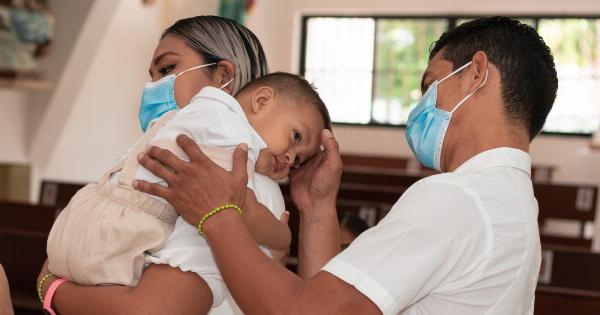Fever seizures, also known as febrile seizures, are convulsions that can occur in otherwise healthy children between the ages of 6 months and 5 years.
These seizures are usually caused by a sudden rise in the body’s temperature, often resulting from an illness or infection. While fever seizures can be scary to witness, they are generally harmless and do not typically lead to long-term health problems. However, it is important to know the triggers and remedies to best protect your child.
Triggers of fever seizures
The exact cause of fever seizures is not fully understood, but researchers have identified several factors that can trigger them. Some of these triggers include:.
1. Rapid rise in temperature
A sudden, rapid rise in body temperature can trigger fever seizures. This can happen if the child is overdressed, overheated by the environment (such as inside a car), or when the body is fighting an infection or illness.
2. Viral infections
Viral infections such as the flu, roseola, or hand-foot-and-mouth disease are common causes of fever seizures. These viruses can cause a sudden onset of fever, which can lead to seizure activity in some children.
3. Bacterial infections
Bacterial infections such as pneumonia, meningitis, or ear infections can also trigger fever seizures. These infections can cause a fever, which can lead to seizure activity in some children.
4. Immunizations
Immunizations that prevent illnesses such as measles, mumps, or rubella can also trigger fever seizures in some children. The fever is a common side effect of the vaccine, which can lead to seizure activity in some children.
5. Family history
Children with a family history of fever seizures are more likely to experience them themselves.
Remedies for fever seizures
If your child has a fever seizure, it is important to stay calm and take the following steps:.
1. Prevent injury
Clear the area surrounding your child, and lay them on their side to prevent choking on vomit or other fluids. Do not try to hold your child down during the seizure, unless it is absolutely necessary to prevent injury.
2. Observe the seizure
Take note of the duration and characteristics of the seizure, which can help your doctor determine the underlying cause. Usually, fever seizures last for just a few minutes and do not require medical attention.
3. Control the fever
To help prevent future fever seizures, it is important to control the child’s fever. Give them a dose of acetaminophen or ibuprofen, and provide plenty of fluids. Monitor the child’s temperature regularly to make sure it does not spike again.
4. Seek medical attention
If your child experiences a fever seizure for the first time, or if the seizure lasts longer than five minutes, contact your doctor immediately. They may recommend additional tests or further treatment if necessary.
Prevention of fever seizures
While fever seizures cannot always be prevented, there are steps you can take to reduce the risk of your child experiencing one:.
1. Dress your child appropriately
Make sure your child is dressed appropriately for the environment, neither too hot nor too cold. Avoid overdressing them, especially at night.
2. Address symptoms of infection promptly
If your child exhibits symptoms of an infection, address these promptly. This can include administering fever-reducing medication, making sure they get plenty of rest, and consulting with your doctor if their symptoms persist or worsen.
3. Stay up to date on immunizations
Make sure your child is up to date on their vaccinations, which can help prevent illnesses that can trigger fever seizures.
Conclusion
Fever seizures are a somewhat common occurrence in young children and are typically harmless. Understanding the triggers and remedies for fever seizures can help parents provide the best care for their children.
While not always preventable, steps can be taken to reduce the risk of fever seizures happening in the first place. Remember to stay calm and seek medical attention if necessary.





























